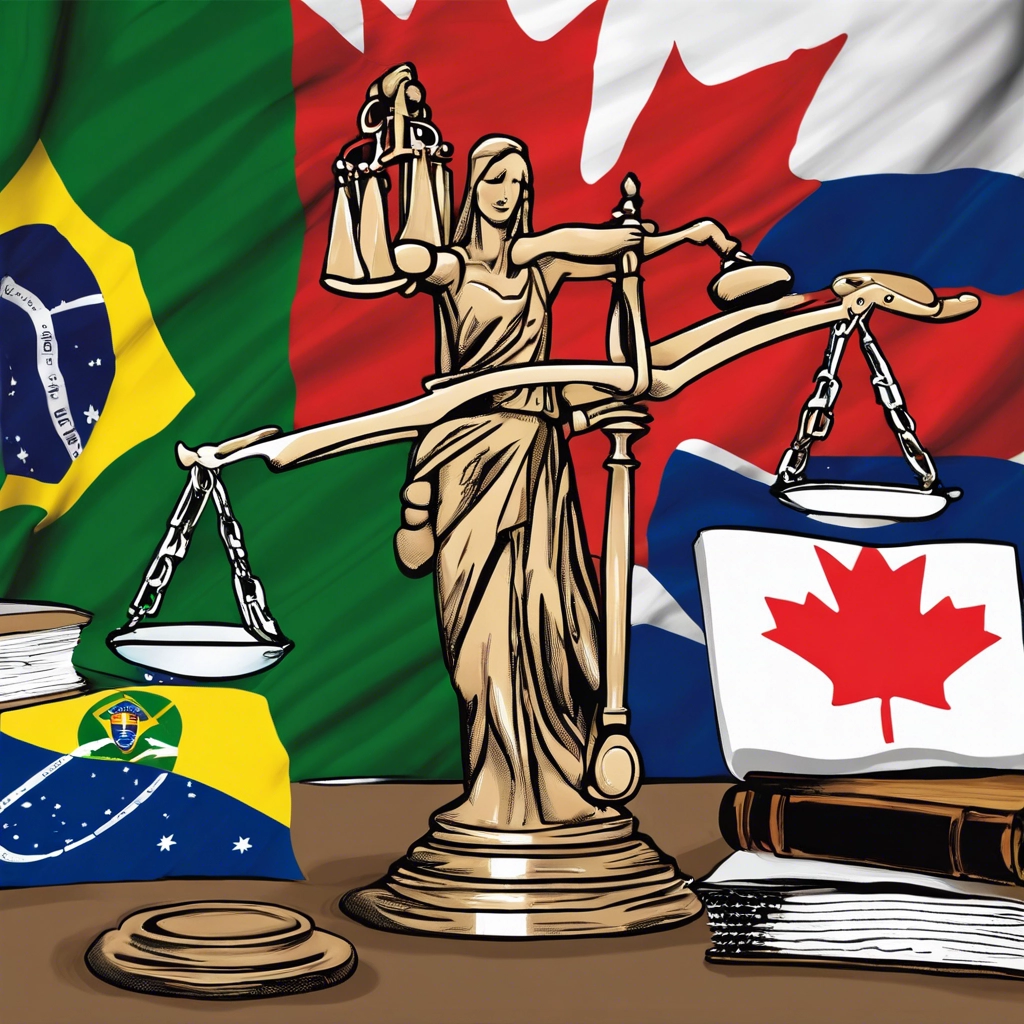
The landscape of trademark protection and infringement litigation presents a complex tapestry that varies significantly across different jurisdictions. The recent Canadian case, Amer Sports Canada Inc v Adidas Canada Limited (2024 BCSC 3), sheds light on the strategic use of interlocutory injunctions in safeguarding trademarks. This article aims to juxtapose the Canadian legal approach, as illustrated by this case, with the Brazilian framework established under the Industrial Property Law (Law No. 9279/96) and the Civil Code, providing a comparative analysis that highlights both the commonalities and divergences in trademark litigation practices.
Criteria for Granting Injunctions
The issuance of interlocutory injunctions in trademark disputes hinges on specific criteria that, although universally acknowledged, are applied differently in Canada and Brazil.
| Criteria | Canada (Based on Amer Sports Canada Inc v Adidas Canada Limited) | Brazil (Industrial Property Law & Civil Code) |
|---|---|---|
| Serious Issue to be Tried | Demonstrated through the genuine issue of trademark infringement or confusion. | Requires “fumus boni iuris” (appearance of good law) as per Article 300 of the Civil Code. |
| Irreparable Harm | Shown through potential harm that cannot be remedied by damages, such as loss of distinctiveness or market share. | Emphasized in Article 209 of the Industrial Property Law, focusing on preventing irreparable damage or significant inconvenience. |
| Balance of Convenience | Assessed based on which party would suffer more harm from the granting or refusal of the injunction. Trademark ownership and registration are pivotal. | Considers the balance between preventing damage to the plaintiff and avoiding undue hindrance to the defendant’s activities. |
Trademark Protection
Both Canada and Brazil recognize the importance of trademark registration in affording protection, yet they approach the concept of infringement and the scope of protection somewhat differently.
| Aspect | Canada | Brazil (Industrial Property Law) |
|---|---|---|
| Registration | Necessary for protection, though common law rights are also recognized. | Registration confers exclusive rights nationally, with recognition of prior use within Brazil (Art. 129). |
| Infringement | Constituted by unauthorized use leading to consumer confusion. | Defined as unauthorized use of a registered mark or a similar sign causing confusion (Art. 195), encompassing a broad interpretation of unfair competition. |
Remedies for Infringement
The remedies prescribed by Canadian and Brazilian laws for trademark infringement are designed to halt unauthorized use and compensate the aggrieved party, albeit with some variations in their application.
| Remedy | Canada | Brazil (Industrial Property Law) |
|---|---|---|
| Injunctions | Interlocutory injunctions are crucial for preventing ongoing infringement during litigation. | Preliminary injunctions are available to prevent imminent harm or throughout infringement proceedings (Art. 209). |
| Damages | Based on the actual loss, including lost profits and goodwill dilution. | Calculated from the violator’s profits, the owner’s actual damages, and potentially moral damages (Art. 210). |
| Destruction of Infringing Goods | Courts may order the destruction of infringing items and related materials. | Similar provisions for the seizure and destruction of infringing goods (Art. 210, §1). |
Analysis and Conclusion
The case of Amer Sports Canada Inc v Adidas Canada Limited not only exemplifies the Canadian judiciary’s stance on interlocutory injunctions in trademark disputes but also serves as a lens through which to examine the Brazilian approach to similar legal challenges. While both countries adhere to the foundational principles of trademark protection, their legal frameworks and judicial interpretations reveal nuanced differences that can significantly impact litigation strategies and outcomes.
In Canada, the emphasis on demonstrating a serious issue, irreparable harm, and the balance of convenience aligns with a pragmatic approach to preventing consumer confusion and preserving trademark integrity. Conversely, Brazil’s incorporation of “fumus boni iuris” and “periculum in mora,” coupled with a broader interpretation of infringement under the umbrella of unfair competition, reflects a legal environment that is both protective of trademark rights and mindful of the potential for overreach.
For legal practitioners and trademark owners, navigating these differences necessitates a deep understanding of local laws and an appreciation for the strategic use of legal tools such as injunctions. As global commerce continues to blur geographical boundaries, the importance of such comparative legal insights cannot be overstated, underscoring the need for adaptability and awareness in the ever-evolving domain of trademark law.
References: